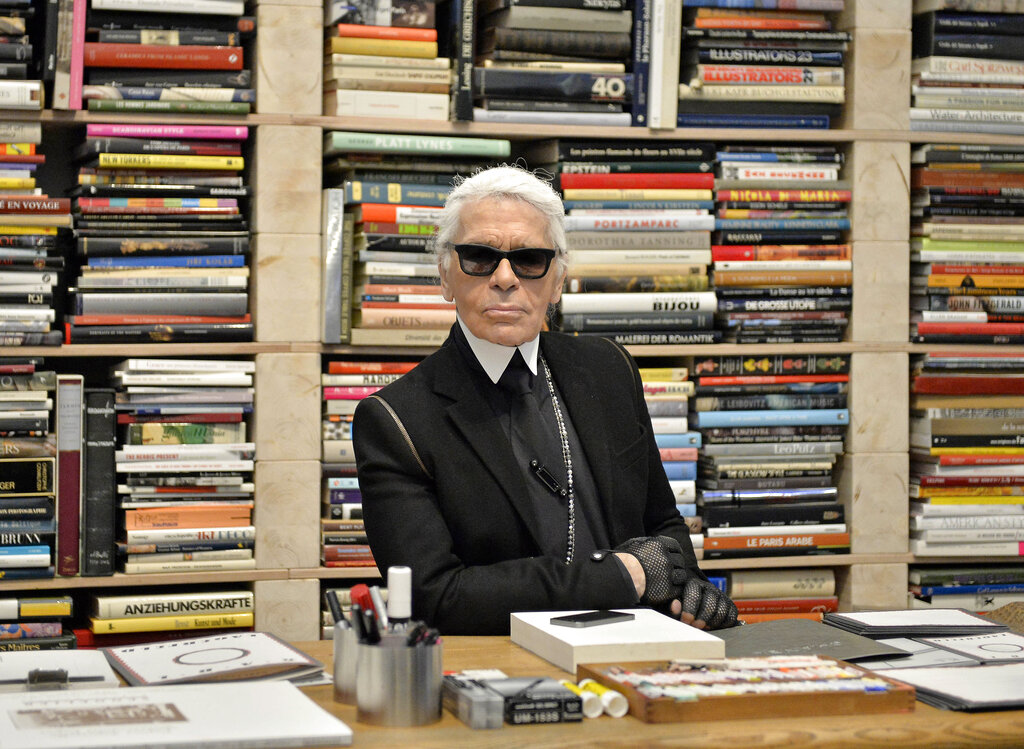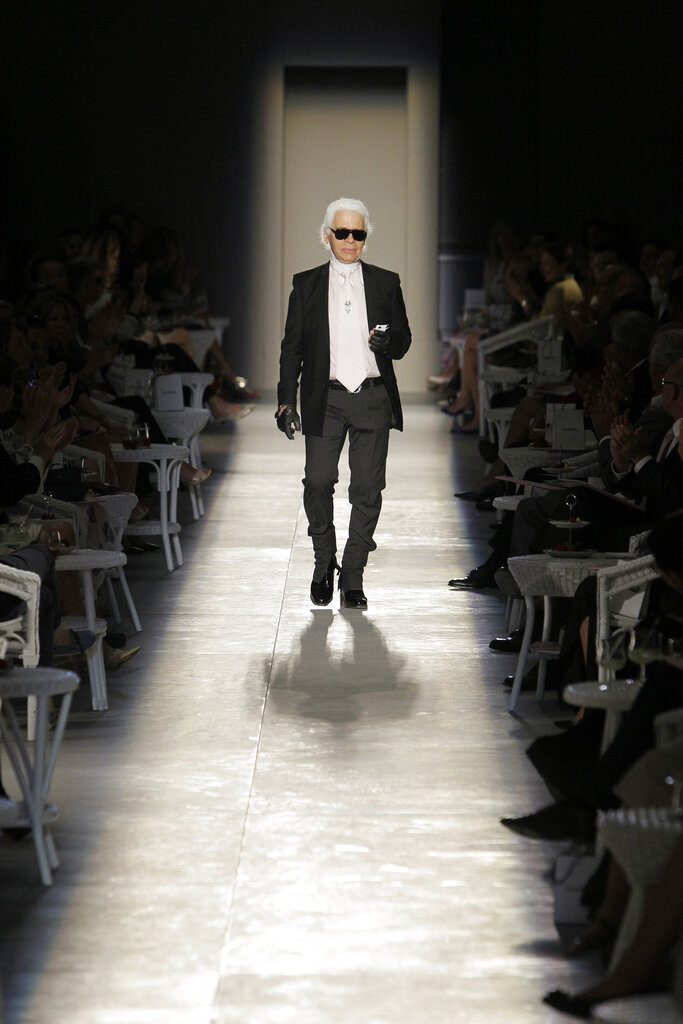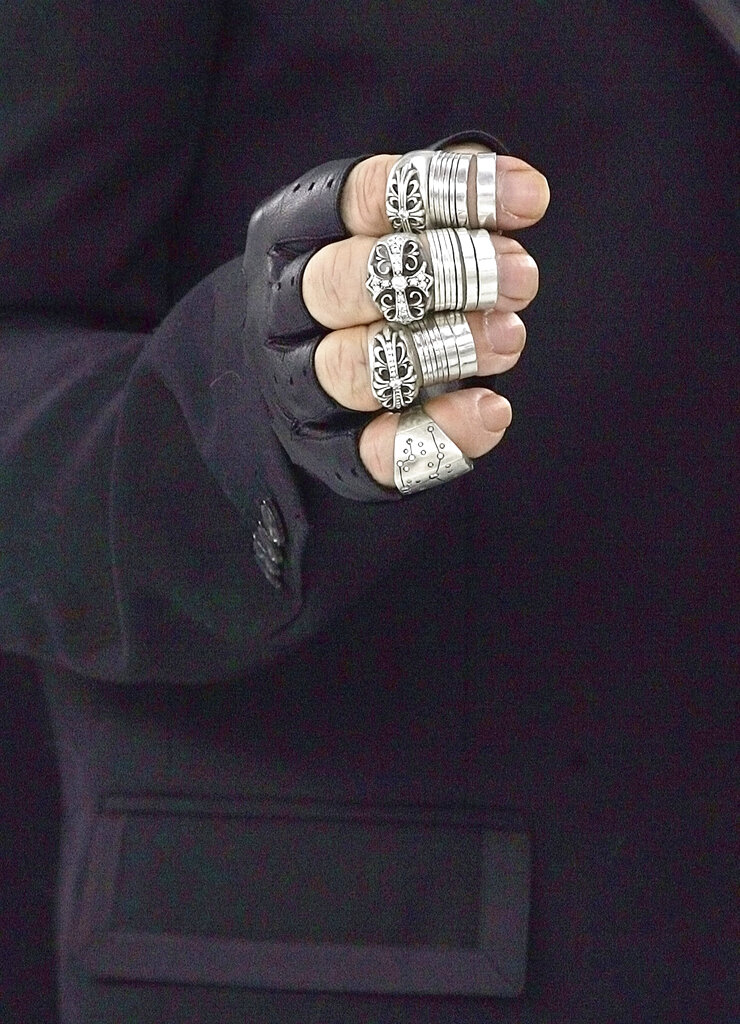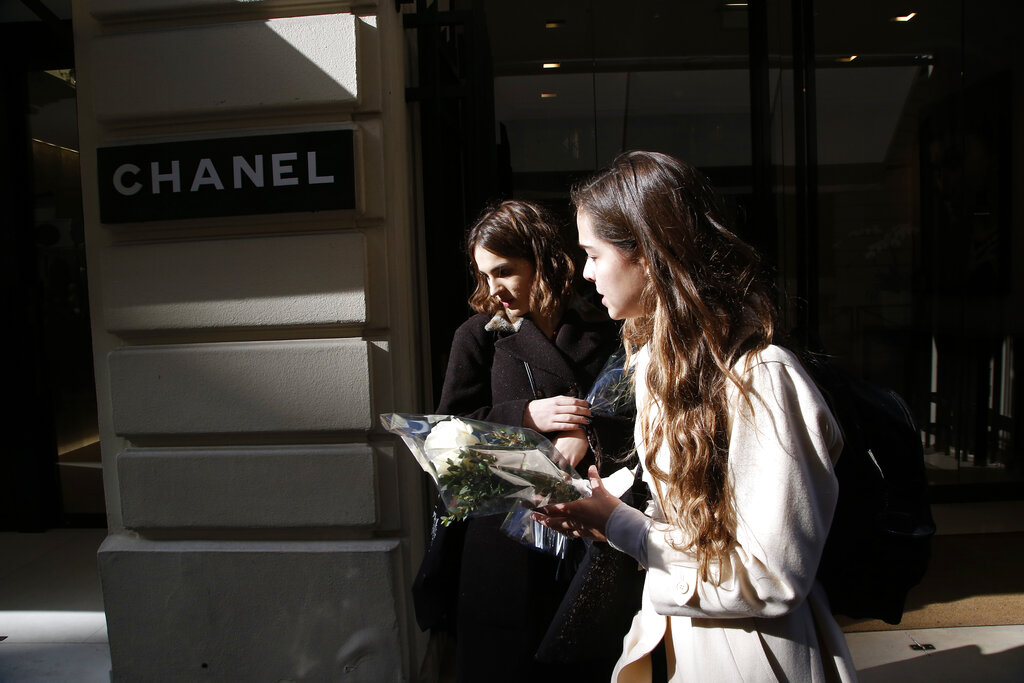
Karl Lagerfeld once created a Walmart-sized "Chanel Shopping Center" to show off his ready-to-wear collection. It featured aisle upon aisle of luxury foods labeled "one for the price of two." Immediately after models had paraded through the aisles, guests raided the shelves. Rihanna posed in a shopping cart, and Keira Knightley looked on amazed. "Luxury should be worn like you're going to the supermarket. It's the pop art of the 21st century," Lagerfeld said, his eyes barely visible behind his enigmatic shades. The show was the type of presentation that came to define much of Lagerfeld's six-decade career at the top of fashion. AP

In this October 5, 1985 file photo, from left, Carla Fendi, Karl Lagerfeld and US ambassador to Rome, Maxwell Rabb attend the opening of an exhibition at Rome's National Gallery of Modern Art to celebrate the 20-year collaboration between Lagerfeld and Fendi. When Chanel fell into decline following Coco Chanel's death in the 1970s, its new owners looked for a larger-than-life designer to wake up the house from its creative coma. The German-born Lagerfeld, a contemporary of Yves Saint Laurent with a strict ponytail and tight collar, was just the man. AP

In this October 19, 1995 file photo, German designer Karl Lagerfeld joins models, from left, American Cindy Crawford, Canadian Linda Evangelista and Claudia Schiffer of Germany after the presentation of his 1996 spring-summer ready-to-wear fashion collection for Chanel in Paris. Donning sunglasses and gloves, he evolved into "Kaiser Karl" — a nickname that referred to his demanding character, put-downs and uncompromising standards. "Sweatpants are a sign of defeat. You lost control of your life so you bought some sweatpants," he once declared. AP

The sheer ambition of his fashion shows was legendary, and they became especially influential in an age in which images are beamed around the world at the click of a button. His Chanel collections were invariably the biggest on the Paris Fashion Week calendar. Chanel, it was said, put the "show" in "fashion show." Lagerfeld was also an anachronism, dressing in a punk, baroque style and defying political correctness — almost proudly. Of his feelings following a collection, he once said: "I'm a kind of fashion nymphomaniac who never gets an orgasm." AP

This January 25, 2005 file photo, shows Lagerfeld's hand, seen backstage before the presentation of the spring-summer 2005 haute couture fashion collection he designed for Chanel. The love of his life, his cat Choupette, was testament to his kind, if eccentric, heart. He wore her likeness as a pendant at one show and acknowledged that she has at least two maids. She is spoiled, "much more than a child could be," he said in 2013, revealing that he took her to the vet nearly every 10 days. Like a proud parent, Lagerfeld told a magazine that Choupette earned more than $3 million in 2014 for advertising campaigns. AP

Well-wishers arrive to lay flowers in tribute to Karl Lagerfeld at Chanel's headquarters in Paris on Tuesday. In recent seasons, Lagerfeld looked increasingly frail. For a 2012 couture display, Lagerfeld built a futuristic jetliner, with the aisle serving as the runway for models and guests gathered in Star Trek-style seating. Lagerfeld was supposed to be in the vessel's cockpit giving interviews. But he was nowhere to be found. Then, as quickly as he vanished, Lagerfeld reappeared near the jetliner's entry hub. Amid the spectacle, Lagerfeld was an island of calm, sipping Diet Coke from a silver platter. AP


